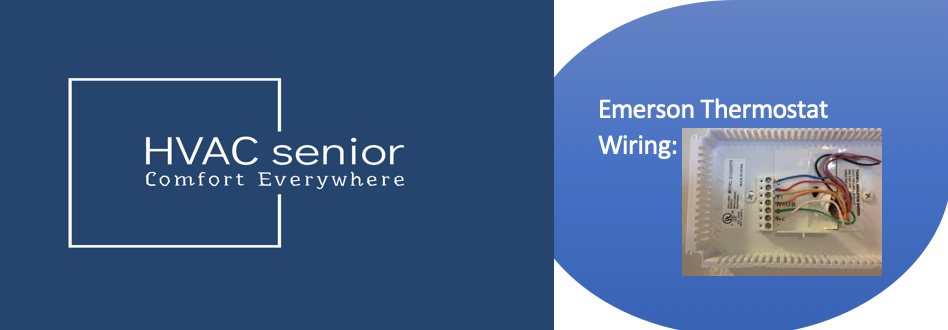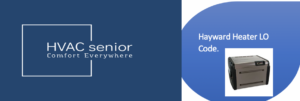If you’re searching for a cost-effective, energy-efficient way to heat and cool your home, a ductless heat pump might be the perfect solution. These systems, also called mini-split heat pumps, are becoming increasingly popular for homeowners looking to cut energy costs, reduce carbon footprint, and enjoy year-round comfort.
Here is this detailed guide explaining what a ductless heat pump is, how it operates, its advantages, installation procedure, prices, upkeep, and how it stacks up versus a conventional HVAC system.
What Is a Ductless Heat Pump?
A ductless heat pump is a heating and cooling system without ductwork. It is rather composed of two main devices:
- An outdoor compressor/condenser unit
- An indoor air-handling unit (also referred to as a head or cassette)
These two sections are connected by lines of refrigerant that carry heat from one to the other. Unlike central HVAC systems that employ a duct system, a ductless heat pump shifts air into separate spaces or zones.
This is ideal for homes with no prior ductwork or for room additions, garages, or older residences where installing ducts would be expensive or logistically difficult.
How Does a Ductless Heat Pump Work?
The magic of a ductless heat pump system is the way it is able to transfer heat, rather than produce it.
Here’s how it works in simple terms:
- Heating Mode: During colder months, the outdoor unit draws warmth from the air (even in subzero conditions) and brings it inside via the refrigerant lines.
- Cooling Mode: In summer, the cycle is reversed — the heat pump takes heat from your indoor air and releases it outdoors, cooling your living area efficiently.
The heat transfer process is electricity-driven and can deliver up to three times more heating energy than the electricity used, making ductless heat pumps one of the most energy-efficient HVAC systems on the market.
Top Benefits of a Ductless Heat Pump
1. Energy Efficiency
Ductless heat pumps are designed to maximize energy savings. Traditional HVAC systems lose up to 30% of the energy in ducts, while ductless systems eliminate this loss completely.
Most of them feature SEER ratings of more than 20 and HSPF ratings of 9 or higher, which translate to lower electricity bills and a reduced carbon footprint.
2. Zoned Comfort Control
With a ductless system, you’re able to create customized comfort zones within your home. You can heat and cool each indoor unit independently, so you only heat or cool rooms that you’re using.
It’s not only more comfortable, it also conserves energy waste — why heat an empty guest room when you don’t have to?
3. Easy Installation
Unlike cumbersome systems that involve extensive ductwork, a ductless heat pump can usually be installed in one day. A small hole through the wall connects indoor and outdoor units, disrupting little and keeping your home’s appearance intact.
4. Quiet Operation
Ductless systems are extremely quiet. Indoor units can operate as low as 19 decibels, below a whisper. This is ideal for bedrooms, home offices, or living rooms where quiet is an issue.
5. Improved Indoor Air Quality
Ducts are susceptible to having dust, allergens, and mold accumulate over time. Because ductless systems don’t employ ducts, they naturally provide cleaner indoor air.
Additionally, most ductless heat pumps come pre-equipped with multi-stage filtration to trap fine particles, pollen, and bacteria — perfect for allergy patients.
6. Green Friendly
R-410A refrigerant is used in modern ductless heat pumps, which does not harm the ozone layer. With their safe high efficiency, they are an eco-friendly option for green-minded homeowners.
Ductless Heat Pump vs. Central HVAC System
| Feature | Ductless Heat Pump | Central HVAC System |
| Installation | Simple and quick | Complex and requires ductwork |
| Energy Efficiency | Extremely high (no duct loss) | Lower (duct losses 20–30%) |
| Zoning | Independent room control | One thermostat for whole house |
| Cost | Moderate initial, low long-term costs | Higher installation and maintenance costs |
| Air Quality | Superior (no ducts, built-in filters) | Dependent on duct cleanliness |
| Noise Level | Quiet operation | Louder, especially from vents |
Verdict: For most new homes, the ductless heat pump is the clear winner in terms of efficiency, flexibility, and comfort. But for larger homes that already have ducts, replacing your central system may still be worth it.
Also read: Smallest Ductless Mini Split.
Types of Ductless Heat Pump Systems
When you’re buying a ductless heat pump, make sure to choose the optimal setup for your environment.
1. Single-Zone Systems
Heats or cools one room or area. Ideal for small apartments, garages, or new homes.
2. Multi-Zone Systems
These connect multiple indoor units to a single outdoor unit, allowing you to separately control temperatures in multiple rooms. Whole-home comfort at its finest.
3. Floor-Mounted Units
Low-wall mounted, best for small wall spaces or large windows.
4. Ceiling Cassette Units
Installed into ceilings, with uniform air distribution and a low, unobtrusive profile.
Also read: Duct Insulation.
Installation Process
Professional installation is crucial in order to ensure optimum efficiency and longevity. The following is what typically occurs in ductless heat pump installation:
- Site Inspection: A technician assesses your home layout and determines the correct system size and installation location.
- Mounting Indoor Unit: The air handler for the indoor is mounted on the floor, ceiling, or interior wall.
- Installing Outdoor Unit: The compressor unit is mounted outdoors, usually on a solid concrete slab.
- Connecting Lines: Refrigerant, electrical, and condensate drain lines are connected via a small wall cavity.
- System Testing: The technician tests performance, leaks, and adjusts the thermostat.
Installation takes 4–8 hours, depending on the system’s complexity and the quantity of indoor units.
Ductless Heat Pump Cost
A ductless heat pump costs depending on the brand, capacity, and quantity of zones. On average:
- Single-zone system: $2,000 – $5,000 (installed)
- Multi-zone system: $5,000 – $10,000+
- Energy savings: 25–40% savings in utility bills compared to conventional HVAC systems.
While the up-front investment will be high, long-term energy and maintenance savings are a worth considering upgrade.
Ductless Heat Pump Maintenance Tips
To keep your ductless heat pump performing at its best:
- Clean Filters Periodically: Clean or replace filters every 4–6 weeks.
- Check Outdoor Unit: Clear out debris, leaves, and snow buildup.
- Schedule Yearly Maintenance: A professional service check should include refrigerant levels, coils, and electrical components.
- Check for Obstructions: Ensure nothing is blocking the indoor airflow.
- Monitor Energy Use: Irregularities on your bill could indicate service is due.
Proper maintenance ensures longevity — most heat pumps have a lifespan of 15–20 years if properly serviced.
Best Brands for Ductless Heat Pumps
Some of the most trustworthy ductless heat pump brands include:
- Mitsubishi Electric – High-end inverter technology and very quiet units.
- Daikin – Smart, high-efficiency systems with Wi-Fi controls.
- Fujitsu – High reliability and great warranties.
- LG – Slimmer designs and heavy-duty dual inverter compressors.
- Gree – Budget-friendly and energy-efficient options for customers with limited budgets.
When choosing a brand, ensure warranty protection, efficiency ratings, and local support availability.
Ductless Heat Pump Rebates and Incentives
Utility companies and government agencies offer rebates on ductless heat pumps as they consume less energy. Depending on where you live, you can receive:
- $300 – $2,000 in rebates
- Tax credits for installation of ENERGY STAR®-certified models
- Reduced electric rates through energy-efficiency plans
Contact your local utility company or visit energystar.gov
for current incentives.
Is a Ductless Heat Pump Right for You?
A ductless heat pump is perfect if you:
- Live in an existing house without ducts
- Would like to lower your heating and cooling bills
- Need zoned temperature control
- Are seeking green home solutions
- Like quiet, comfortable operation
But if you live in extremely cold weather (below -15°F / -26°C), you may choose a cold-climate heat pump or use a supplemental heat source.
Last Thoughts
A ductless heat pump is one of the wisest investments you can make in the comfort and efficiency of your home. With easy installation, zone control, quiet operation, and high energy savings, it surpasses traditional HVAC systems in virtually every way.
Whether it’s time to update an existing system or build a new home, a ductless heat pump provides year-round comfort, reduced bills, and healthier air — all in one efficient, contemporary package.
Ditching ducts is not only about staying comfortable — it’s about moving toward a sustainable, energy-savvy future.









